Tuck Scott lets the boat slowly pilot itself as the motor trolls and we patrol the open, brackish waters of South Carolina's Broad River. Our eyes fight the sun glare as we endlessly scan the blue and silver expanse in hopes of spotting a solitary fish. A cobia. After what seems like hours, but in reality is more like 30 minutes, Tuck spots something in the distance and hops down from the poling platform to steer the boat in the direction of our quarry -- a likely 20 pound cobia finning placidly, its pectoral and dorsal fins regularly breaking the surface as it cruises along on its own patrol. We approach with what seems like a complete absence of caution, and by the time we're within a couple hundred feet I'm confounded as to how the fish hasn't spooked, either from the sound of the boat's motor amongst the silent expanse of the river or from the sight of us. But we continue towards the fish and, before long, Tuck readies me at the bow and hands me a 9 weight with a fly as big as my hand and as gaudy as a mardi gras float strapped to the line. We come within mere feet of the fish and I toss short casts, stripping feverishly and hoping to entice a strike. The cobia follows several times to within what is literally arm's length, each time failing to commit to eating the fly, but never spooking despite the fact that we are plainly within its sight. After a half a dozen tries, the cobia bores of our efforts and fins slowly off in the other direction, not to be seen again.
Cobia, for the fly fisherman, are a unique quarry. Chasing cobia on the fly is a patient man's game, but their decisive confidence and impressive power makes them an alluring gamefish. Cobia rarely school and are typically solitary, making their pursuit a bit of an oddity and their nature a mystery to many an angler. They've also long either been a mystery to, or simply ignored by, commercial fishermen as well -- as their solitary nature makes them impractical to harvest in the wild. But, if third generation fish farmer Brian O’Hanlon has his way, cobia will be the fish of the future, and one that may help solve some of the vexing problems facing a world that is gravely uncertain about how to feed its wildly expanding population.
Since 2007, O'Hanlon has been farming cobia off the coast of Panama. But, unlike traditional farming operations which take place in near-shore environments, O'Hanlon's operation -- Open Blue -- is 8 miles off the coast in the deep waters of the Caribbean. Unlike traditional fish farming operations, Open Blue's system -- which O'Hanlon pioneered -- farms fish in deep waters with powerful currents, avoiding many of the issues of near-shore operations where highly stressed fish swim in confined quarters, often marinating in their own waste. Open Blue's fish swim large, low-density net pens submerged 60 feet below the surface where strong ocean currents ensure the fish never, as O'Hanlon puts it, "see the same water twice".

Ocean Blue proclaims a commitment to sustainability and a dedication to a net zero impact on the ecosystem and their results thus far seem promising. O'Hanlon and his team are constantly refining the process and looking for ways to improve and refine their already innovative aquaculture process.
But the star of the show seems to be the fish Open Blue is farming -- the typically solitary cobia which, as it turns out, takes quite well to aquaculture. Cobia grow quickly in Open Blue's system, with fish growing to harvestable size in about a year. And cobia's white but firm meat has been touted by chefs and everyday consumers alike. Grilled cobia has bested competitors like Chilean sea bass, mahi mahi, grouper and black cod in blind taste tests. Even more impressively, as a sashimi or sushi fish, cobia has out tested industry stalwarts such as yellowtail and white tuna.

O'Hanlon has portrayed Open Blue's mission as one that seeks to change the way the entire world farms fish. To that end, Open Blue has made its research regarding cobia farming available to the public. For more information, visit openblue.com.




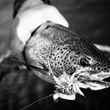
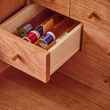




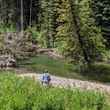
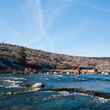




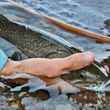



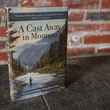
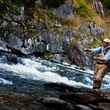



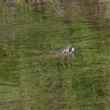
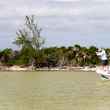




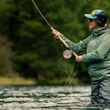
Comments
Capt. Chris Newsome replied on Permalink
The aquaculture of farm-raised predatory fish like cobia has a very glaring problem. Whether raised in a pond or open ocean, these fish must be fed a large, high-protein diet. This feed is generally composed of small filter-feeding forage fish which are harvested in high volume from the wild environment where they serve a crucial role in the transfer of energy from the sun to high trophic predators. The removal of wild forage effectively reduces the carrying capacity of wild predators (our fly fishing quarry). This is hardly conservation and I am disappointed to see Hatch so misinformed or willfully blind.
Pages